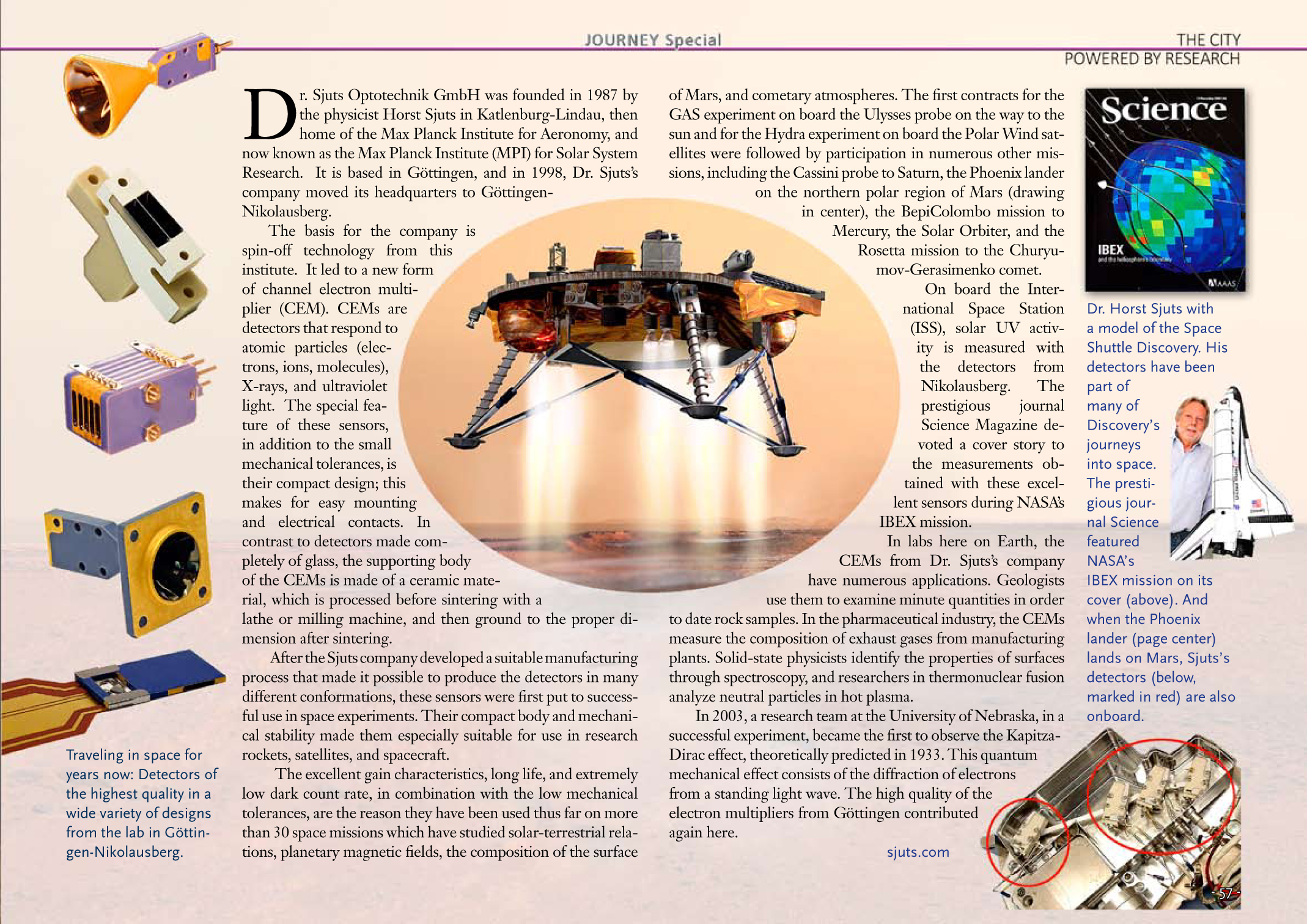Channel Electron Multipliers Series KBL
Outstanding features of the CEMs Series KBL include compact size and ruggedness and special design for easy mounting. In contrast to CEMs constructed entirely of glass, the CEM Series KBL is fabricated from ceramic material that has been processed with a CNC controlled milling machine or lathe before sintering.
After the development of a suitable manufacturing process by the Dr. Sjuts Optotechnik GmbH (founded in 1987), enabling the production of these detectors in many different forms, these detectors found their first application in space research. Because of their small size and their resistance to physical shock they meet the requirements for system components for rockets, satellites and space craft. The excellent gain characteristic, long life time and extremly low dark count rate combined with very small mechanical tolerances are the reasons for their operation in many space missions in which the solar-terrestrial relations, planetary magnetic fields, the composition of the Martian surface or cometary and planetary atmospheres were investigated.
Since 1989 the Channel Electron Multipliers Series KBL are in operation in many laboratories world wide used as detectors in numerous experiments, for example in mass spectrometric dating methodes of geological ages, the search for high-temperature supra-conductively materials, in plasma physics or the measurement of extremly precise isotope abundance ratios.
Ultraviolet Photoemission Spectroscopy (UPS)
|
X-Ray Photoemission Spectroscopy (XPS)
|
Time-of-flight Spectrometry (TOF)
|
|
|
|
Isotope Ratio Measurements
|
Spot-Profile-Analysis LEED (SPA-LEED)
|
Electron-Electron-Loss-Spectroscopy |
Neutral Particles Analysis (NPA)
|
Electron Spectroscopy for Chemical Analysis (ESCA)
|
In addition to the standard types with a maximum count rate of about 5 million counts per second, we offer newly developed CEMs with low wall resistances for extended dynamic range measurements of up to 15 million counts per second, extending the dynamic range of the Channel Electron Multipliers Series KBL significantly and which can be used also for current measurements in the analog mode.
The CEMs ceramic body also serves as an insulator enabling the development of compact arrays of single channels stacked together that allow a spatial resolution as well as simultaneous read out of all channels.
Suitable pulse-preamplifiers and the Measurement System MEASAR (developed by WMT Elektronik GmbH), which permits simultaneous uninterrupted read out of up to 28 channels, complete the CEM Series KBL program and offer the customer the entire range of equipment necessary for pulse counting applications.
All CEMs are fully tested prior to shipment to ensure a constant high quality. After the burn-in procedure we measure the gain characteristic and the dark count rate. The measurement of the burn-in phase and the gain characteristic are documented in a Final Test Sheet that is included in delivery. |



